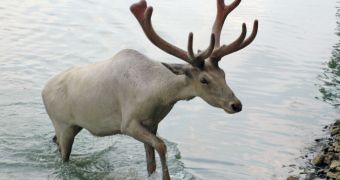The huge brain that mammals have – in comparison to the size of their bodies – may have grown to these dimensions as a result of the enlargement of the olfactory bulb and the smell-processing areas of the cortex. The finding was made by studying a species that lived millions of years ago.
The reason why mammals have such an impressive brain has always eluded scientists, despite their best efforts. Other animals tend to have very small brains, when compared to their body sizes. What made our group stand out from the crowd was unknown until the new study.
What researchers discovered by analyzing an animal called Morganucodon was that the development of parts of the brain involved in sensing and processing smell may have helped boost the formation of new brain areas altogether.
Experts analyzed this particular creature because they say it marks the passage from mammal-like reptiles to actual mammals. It lived during the Triassic Period, which spanned between 250 to 200 million years ago.
Mammals, as a group, are believed to have evolved for the first time some 200 million years ago. Their large and complex brains represented a departure from the norms of the time. Reptiles were not exactly the sharpest tools in the shed.
In the new study, experts analyzed a skull belonging to the mouse-sized Morganucodon using high-resolution X-ray computed tomography. This allowed them to reconstruct the geometry of the skull's inner cavities in 3D, without damaging the fossil.
The research team was led by Timothy B. Rowe, who is a professor and the J. Nalle Gregory Regents Professor in the Department of Geological Sciences at the University of Texas in Austin (UTA).
Details of the investigation were published in a recent issue of the top journal Science. The team says that the animal whose fossils they analyzed lived in the late Triassic period, 205 million years ago.
Morganucodon had a brain 50 percent larger than earlier Triassic reptiles, and most of this difference was accounted for by the enlargement of the olfactory bulb and olfactory cortex, the team reveals.
UTA scientists are arguing that this also led to an increase in the size of the cortex and the cerebellum, eventually making the animal's brain more similar to that of mammals than to that of reptiles.
This study provides an interesting starting point, but its conclusions need to be doubled by other researches. Experts have to analyze other animals on the path from reptile to mammals, in order to determine if the same correlation applies, Wired reports.

 14 DAY TRIAL //
14 DAY TRIAL //